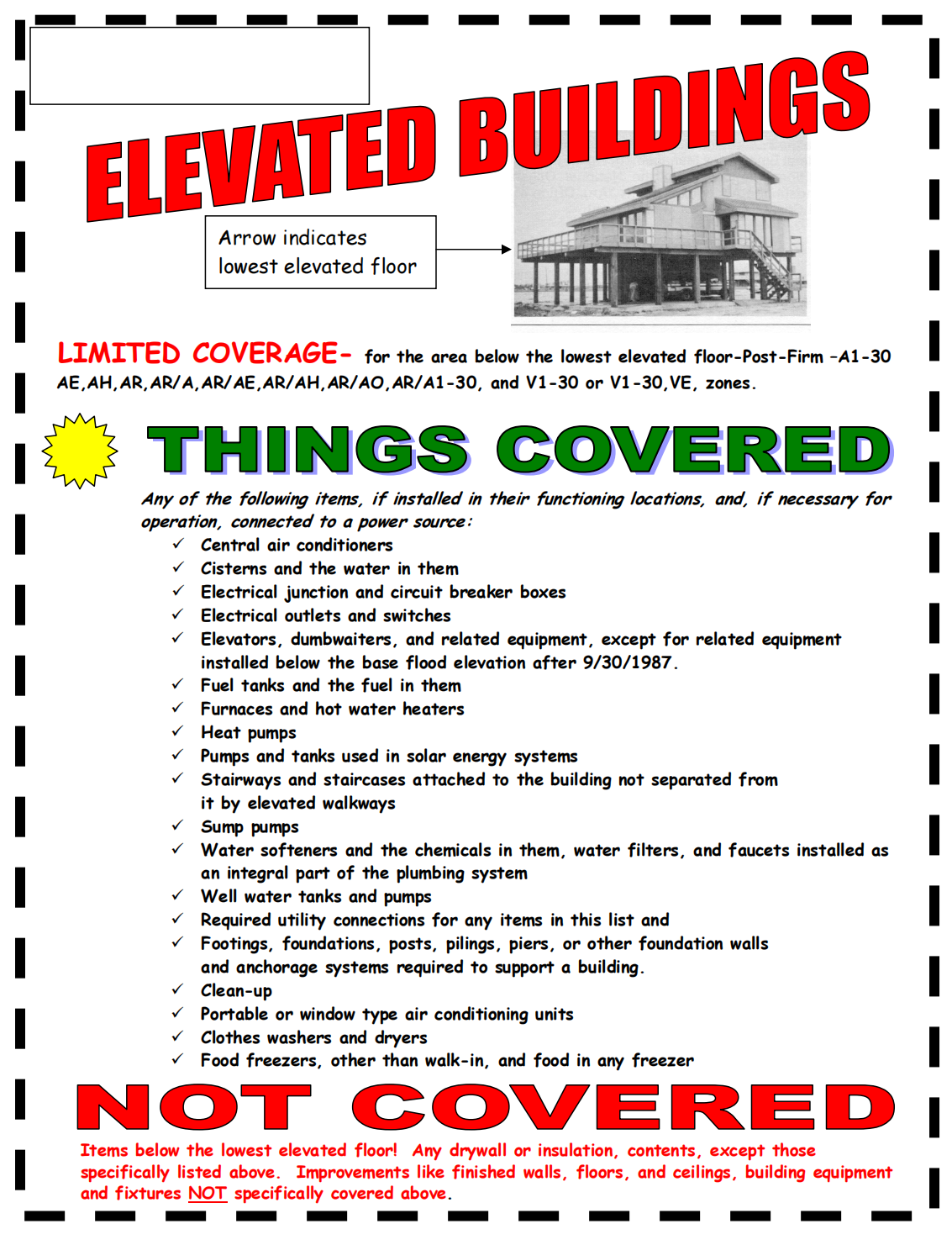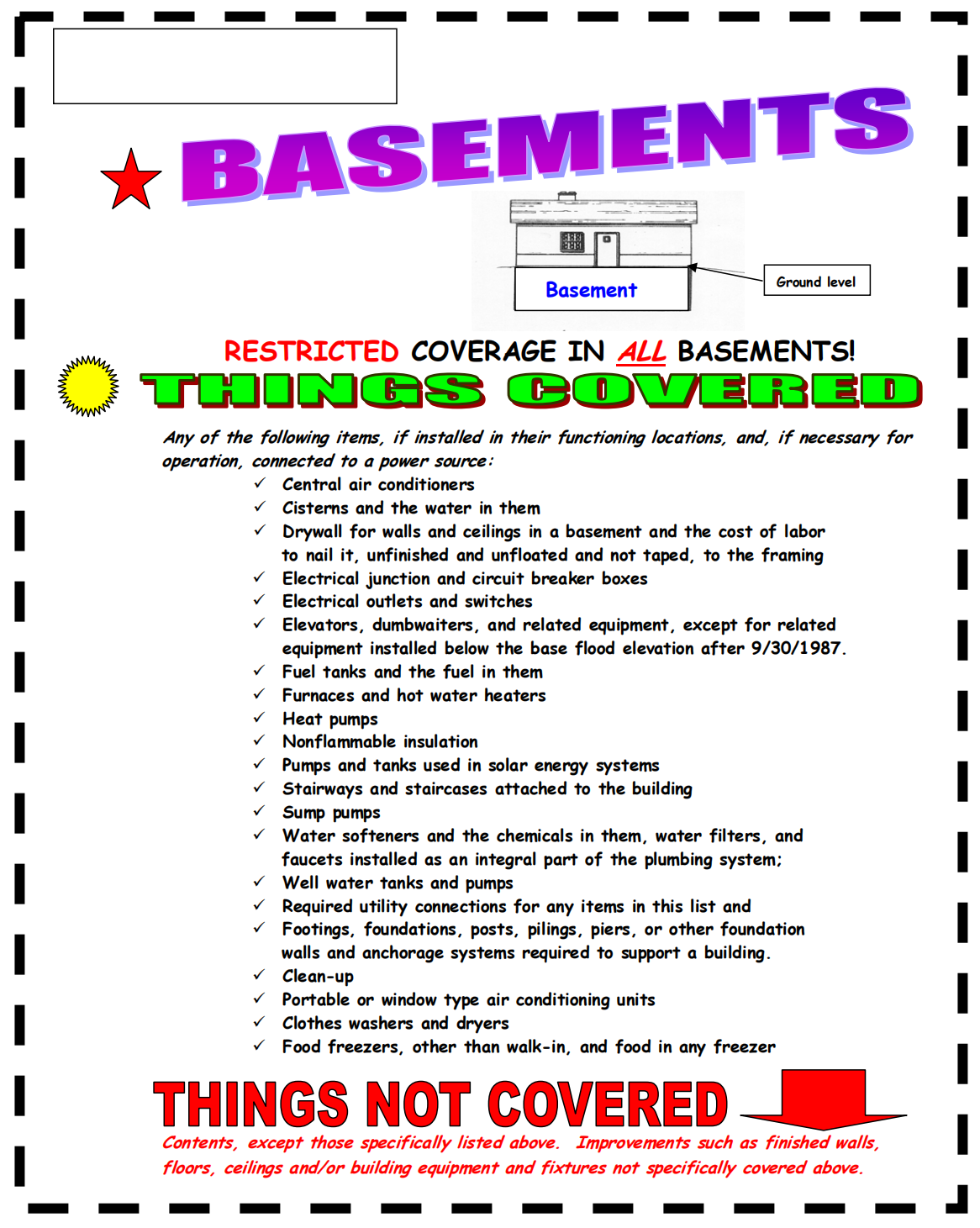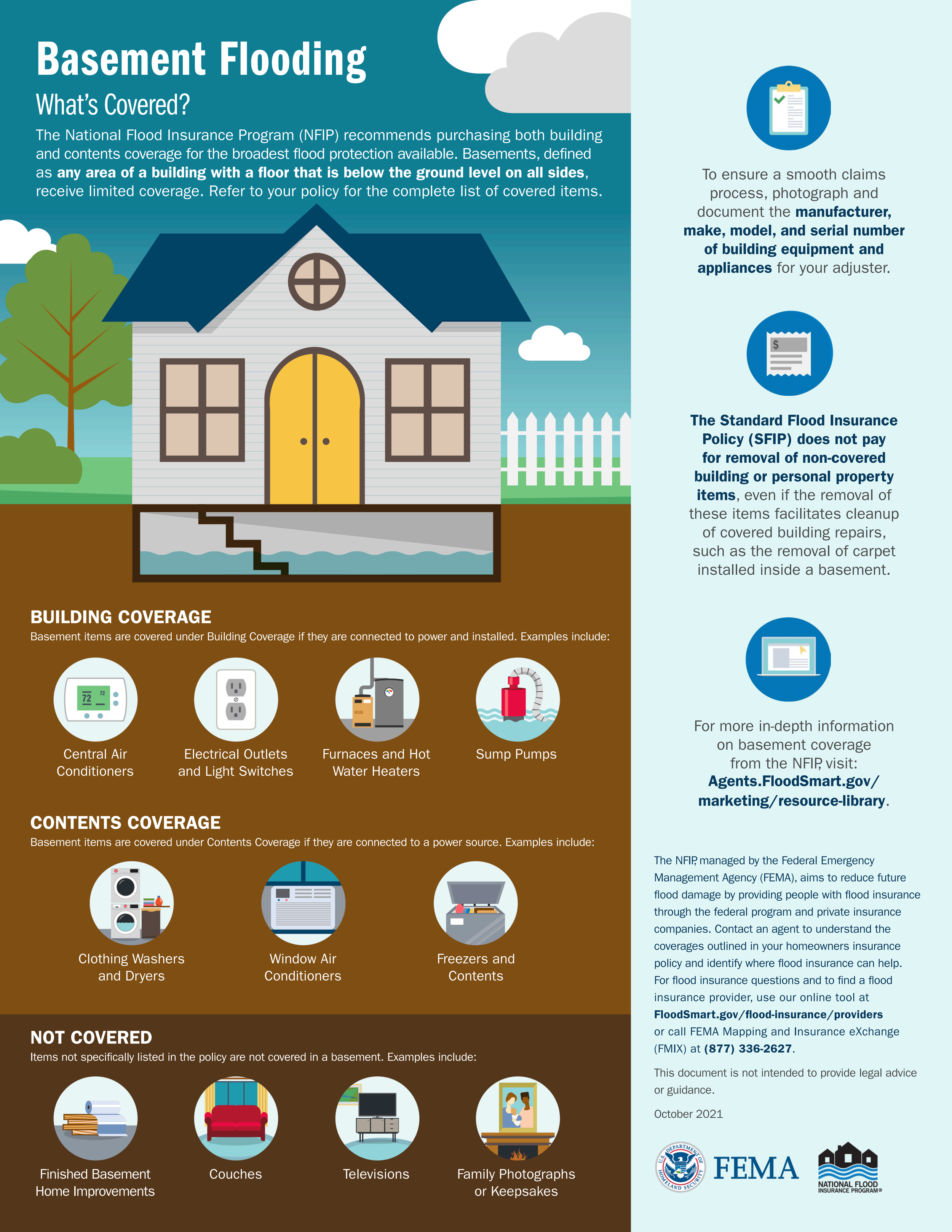📝 WHAT TO DO AFTER YOUR BUILDING FLOODS
1. Ensure Safety First
✅ Wait until local officials say it is safe to re-enter.
✅ Watch for structural damage, electrical hazards, and gas leaks.
✅ Wear protective gear (boots, gloves, masks) to avoid injury or contamination.
2. File Your Flood Insurance Claim Immediately
🗂 Contact your flood insurance provider (NFIP Direct or WYO carrier) as soon as possible.
For NFIP Direct:
Call the NFIP Direct Claims Line at 1-800-638-6620 or your insurance agent to report your loss.For WYO Policies:
Call your WYO insurance company’s claims reporting number or your agent to initiate the claim.
✔️ Have ready:
• Your policy number
• Contact information
• The date of loss
• A brief description of damage
🔑 Ask for your claim number and write it down – you will need this for all communications.
3. Take Extensive Photos and Videos
📸 Before moving or discarding anything, document your damage thoroughly.
✔️ Take photos and videos of:
• Entire rooms (wide shots) and close-ups of damage
• Standing water lines on walls, furniture, and items
• Damaged appliances and electronics (include serial numbers and model info)
• Structural damage inside and outside (foundations, walls, siding, sheds, fences)
• Personal belongings if you have contents coverage
• Everything you remove or discard, especially ruined appliances, before disposal
🔎 Tip: Turn on your camera’s date stamp or ensure photos show the date taken.
4. Mitigate Further Damage
You are required to prevent additional damage if it’s safe to do so.
✔️ Remove wet items like carpets, rugs, and drywall to prevent mold.
✔️ Cut out and dispose of drywall above the water line if directed by local officials.
✔️ Place items outside if needed, but keep photos and a record of everything you discard.
5. Keep Samples
If removing flooring, carpet, or drywall, keep small samples (approx. 12” x 12”) of damaged materials to show the adjuster.
6. Create a Preliminary Inventory List
📝 Write down damaged building materials, fixtures, and personal property (if you have contents coverage). Include:
• Item description
• Age
• Approximate replacement cost
• Where it was located in your building
7. Gather Important Documents
Provide these to your adjuster upon arrival:
✔️ Flood insurance policy or declaration page
✔️ Photos/videos of damage and any pre-loss condition photos you have
✔️ Receipts or invoices for high-value items
✔️ Contractor estimates if already obtained
✔️ Mortgage information (some payments are co-payable to you and your lender)
8. Prepare for the Adjuster’s Visit
🗓 The adjuster will contact you to schedule an inspection.
✔️ Be available and ensure safe access to all areas of damage.
✔️ Show them: high water marks, damaged areas, samples you saved, and your inventory list.
✔️ Ask questions about the process and expected next steps.
9. Start Cleanup Carefully
While waiting for the adjuster:
✔️ Begin drying out your property if safe (fans, dehumidifiers).
✔️ Keep receipts for any purchases related to mitigation or temporary repairs – these may be reimbursable.
✔️ Do not begin major permanent repairs until the adjuster has inspected the damage.
✅ Key Takeaways
✔️ File your claim immediately.
✔️ Document everything with photos and videos.
✔️ Protect your property from further damage.
✔️ Keep records, samples, and receipts.
💡 Your photos, inventory, and preparation ensure your adjuster can process your claim thoroughly and efficiently.
📸 What Photos Do I Need For My Flood Insurance Claim?
For a policyholder, documentation is key in any insurance claim. When it comes to flood damage, photos speak louder than any written report or repair estimate ever could. While paperwork shows numbers and technical details, clear photos tell the real story of what you’ve lost and how it has impacted your life.
We all hope the claims process will go smoothly and fairly, but the reality is that without strong visual proof, disputes can arise, and arriving at a fair and equitable settlement can be challenging. Photos not only create a clear, undeniable record of your damage, but they also help adjusters truly understand the impact on your business or your home and family. Images cut through red tape, strengthen your claim, and ensure your voice is heard when it matters most.
3 Essential Photo Categories
1. Before Photos (Pre-Loss)
Insurance companies need to see what your home looked like before the storm to avoid questions concerning “pre-existing damage.”
✔️ Take photos every year before storm season.
✔️ Capture flooring, walls, doors, ceilings, appliances (including serial numbers), furniture, and electronics in each room.
✔️ Photograph the exterior: foundation, windows, doors, roof, sheds, and detached buildings.
🔎 TIP: If you don’t have recent photos, search your phone or family albums for pictures showing your home’s interior or exterior in the background.
2. Damage Photos (Most Important)
After the storm:
✔️ Document ALL damage – inside and outside – from multiple angles (wide shots and close-ups).
✔️ Capture warped floors, mold, stained drywall, damaged furniture, sheds, appliances, and electronics.
✔️ For appliances/electronics, include serial numbers, make, model, and age.
✔️ Take more photos than you think you need. It’s better to have too many than to miss something critical later.
🚫 Don’t throw anything away without photos, especially appliances – photograph the entire unit and serial number first.
3. Photos of Completed Repairs
As cleanup and repairs begin:
✔️ Photograph each stage of work (before, during, and after).
✔️ Keep receipts, contractor agreements, and proof of work.
✔️ If doing repairs yourself, keep a time log, material receipts, and before-and-after photos.
Quick Photo Tips
✅ Take photos ASAP after damage occurs and date them.
✅ Never risk your safety to get photos.
✅ Mitigate further damage quickly, but photograph each area thoroughly before moving items or starting repairs.
✅ Organize your photos into albums or folders by room or category, and back them up on cloud services like Google Drive or OneDrive.
✅ Use apps like Adobe Acrobat to save images as PDFs for easy sharing with your adjuster.
💡 Final Reminders
Inform your insurance agent or broker that you are filing a claim.
Take photos of everything you discard during cleanup.
Better to have too many photos than not enough.
“In the chaos after a flood, your photos become your your voice, your truth, and your best defense after a flood.”
Principal and Primary Residence Explanation
1. Primary Residence (51% to 79% of the year)
✅ Definition:
A Primary Residence is the insured building where you or your spouse live for more than 50% but less than 80% of the policy year.
✅ Key Points:
The policyholder or their spouse occupies it more than half the year (at least 183 days) but less than 80%.
This designation is important to NFIP because it establishes the property as your main home rather than a rental, seasonal, or investment property.
It affects eligibility for certain coverage conditions, including ICC (Increased Cost of Compliance) and policy rating.
2. Principal Residence (80% or more of the year)
✅ Definition:
A Principal Residence is the insured building where you or your spouse live for 80% or more of the policy year.
✅ Key Points:
The policyholder or spouse occupies it for at least 80% of the 365 days following the policy effective date.
Designating a property as Principal Residence can qualify you for additional benefits under NFIP rating rules, such as:
Eligibility for Primary Residence rating discounts (e.g. PRP eligibility criteria pre-reform)
Avoidance of certain surcharges that apply to non-principal or non-primary residences
Eligibility for continuous coverage grandfathering under previous flood zone ratings.
🔎 Practical Relevance in SFIP Claims Handling
Loss Settlement Conditions:
Under SFIP Dwelling Form (Section VII. General Conditions > V. Loss Settlement), your Principal Residence status determines eligibility for Replacement Cost Coverage (RCC).If Principal Residence: Full Replacement Cost coverage for building damages if insured to at least 80% of replacement cost or the policy maximum.
If not Principal Residence: Only Actual Cash Value (ACV) is applied to losses, resulting in reduced claim payouts.
Policy Rating & Premium Calculation:
The NFIP uses residence status in underwriting to determine if Primary Residence discounts apply or if non-residential or non-primary surcharges must be assessed.
Proof Requirements:
Adjusters and insurers require documented verification of residence status during claims to ensure correct coverage application and avoid misrepresentation penalties.
⚠️ Bottom Line
✔ Primary Residence: You live there >50% but <80% of the year → important for rating, ICC eligibility, and some coverage considerations.
✔ Principal Residence: You live there ≥80% of the year → qualifies for Replacement Cost coverage if also insured to 80% of the value of the home. Also, favorable rating/treatment under NFIP underwriting rules.







